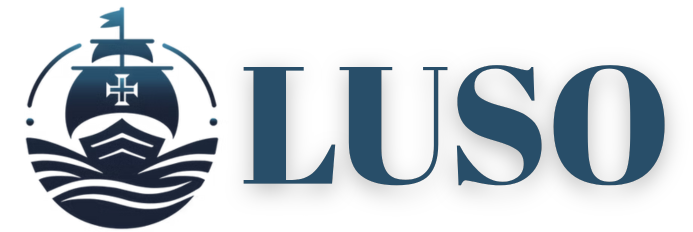Synergizing Human Expertise and Technological Innovation: Transforming Modern Localization
Why the “Either‑Or” Debate Is Over
In today’s interconnected marketplace, organizations must convey their messages authentically across cultures, regions, and languages. The demand for flawless, culturally resonant communication has never been greater, and the stakes have never been higher. At its core, modern localization transcends mere word‑for‑word translation: it necessitates a deep understanding of local customs, legal requirements, and consumer expectations. While technology—especially neural machine translation, AI‑driven quality assurance, and automated workflows—has transformed the speed and scale at which content can be localized, it cannot replace the nuanced judgment, creative flair, and cultural intelligence that only human experts bring. The true competitive advantage emerges at the intersection of human expertise and technological innovation: when linguists, cultural consultants, and domain specialists harness advanced tools to deliver fast, consistent, and emotionally engaging localized content.

The Hybrid Advantage: Speed and Cultural Resonance
Consider a global e‑commerce platform preparing a complex product launch in 20 markets simultaneously. A purely human process would struggle with the timeline and cost; a purely machine‑driven approach would risk tone‑deaf messaging and critical errors in legal disclaimers or UI elements. A hybrid workflow, by contrast, leverages technology to produce first‑draft translations within minutes, while human post‑editors focus on critical paths: refining marketing slogans so they resonate, verifying legal text complies with local regulations, and ensuring consistency with brand voice guidelines. The outcome is both rapid and reliable—customers experience a seamless journey in their own language, with all the cultural signposts they expect.
Collaborative Synergy and Continuous Improvement
Yet the advantages go beyond speed and cost savings. Human professionals contribute deep domain knowledge—technical translators who understand medical device standards, legal linguists who know jurisdictional nuances, marketing copywriters attuned to persuasive rhetoric. Meanwhile, technology continuously learns from human corrections: neural engines fine‑tune on approved translations, QA algorithms adapt to recurring patterns, and terminology management systems update in real time. This virtuous feedback loop elevates both machine outputs and human productivity, creating a cycle of continuous improvement.
Moreover, the collaborative synergy fosters innovation. Human creativity inspires technology: linguists generate synthetic training data to cover rare linguistic constructions, developers embed glossaries directly into MT engines, and project managers design rules that prevent machine‑generated mistranslations of critical UI strings. Conversely, technology amplifies human capacity: real‑time collaboration platforms allow dozens of linguists to work concurrently with change‑tracking and instantaneous glossary look‑ups; automated scripts pre‑clean content of formatting errors, freeing experts to focus on higher‑order decisions; and integrated dashboards surface metrics on translation quality, throughput, and consistency.
Real‑world success stories abound. A leading software‑as‑a‑service provider automated its UI localization pipeline, reducing manual handling by 80% while maintaining a 99.8% terminology accuracy rate. A multinational retailer achieved a 25% uplift in conversion rates in localized markets by deploying a hybrid approach that paired neural MT with specialized post‑editing for top‑tier product descriptions. And a global marketing agency cut its turnaround time for multilingual ad campaigns by half, using AI‑powered QA to enforce local advertising regulations and human linguists to craft emotionally compelling copy.
Governance, Challenges, and Future Outlook
Of course, challenges remain. Low‑resource languages still suffer from sparse parallel data, making purely automated approaches unreliable. Maintaining brand voice across hundreds of linguists requires rigorous style‑guide governance. Sensitive content in legal, financial, or medical contexts demands secure, on‑premises processing and strict access controls. And the relentless drive for faster delivery can tempt organizations to shortcut critical human review steps.
The solution lies in thoughtful process design. By establishing clear quality gates—machine draft, human post‑edit, automated QA, final human review—teams can prioritize deep human oversight where it matters most, while harnessing automation for routine checks and bulk processing. Governance frameworks ensure shared glossaries and style guides are updated collaboratively, with feedback loops that refine both human rules and machine training data. And by embedding privacy and compliance requirements into every stage—from secure translation environments to role‑based access controls—organizations safeguard confidentiality without sacrificing agility.
Looking ahead, the frontiers of localization will expand further. Generative AI will begin drafting marketing taglines or UX microcopy, with human experts curating and refining. Voice‑to‑voice translation systems will enable real‑time multilingual customer support, backed by human moderators to correct subtle misinterpretations. Augmented reality will overlay localized signage in physical environments, merging spatial computing with linguistic expertise. Yet through every technological evolution, human judgment—grounded in cultural empathy, creative insight, and domain mastery—will remain the linchpin of truly effective localization.
In sum, the ultimate advantage in modern localization springs from the union of human and machine. Technology accelerates, scales, and enforces consistency; humans interpret nuance, adapt creatively, and uphold brand integrity. By designing hybrid workflows that amplify each other’s strengths, organizations deliver faster, more cost‑effective, and deeply resonant experiences to customers around the globe. In an era where communication is king, the harmonious partnership of human intelligence and technological prowess unlocks localization excellence—and propels global success.
